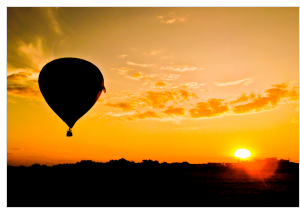

And what will happen when it ends?
Every now and again, it’s good to take stock of the Great Global Reflation that has been marching higher (with a few stumbles and scares) since early 2009, over eight years ago.
Is this Great Reflation running out of steam, or is it poised for yet another leg higher? Which is more likely?
Keynesianism Vs The Real World
Let’s start by reviewing the systemic contexts of the economy.
This Great Reflation is embedded in two basic contexts:
- The dominant socio-economic structures since around 1500 AD are profit-maximizing capital (“the market”) and nation-states (“the government”).
- The dominant economic theory for the past 80 years is Keynesianism, i.e. the notion that the state and central bank must aggressively manage private-sector consumption (demand) and lending via centrally planned and funded fiscal and monetary stimulus during downturns (recessions/depressions).
Simply put, the conventional view holds that there are two (and only two) solutions for whatever ails the economy: the market (profit-maximizing capital) or the government (nation-states and their central banks). Proponents of each blame all economic and social ills on the other one.
In the real world, the vast majority of Earth’s inhabitants operate in economies with both market and state-controlled dynamics in varying degrees.
The Keynesian world-view is doggedly simplistic. The economy is based on aggregate demand for more goods and services. People want more stuff and services, and as long as they have the means to buy more stuff and services, they will avidly do so (this urge is known as animal spirits).
The greatest single invention of all time in the Keynesian universe is credit, because credit enables people to borrow from their future earnings to consume more in the present. Credit thus expands aggregate demand for more goods and services, which is the whole purpose of existence in this world-view: buy more stuff.
But credit, aggregate demand for more stuff and animal spirits make for a volatile cocktail. The euphoria of those making scads of profit lending money to those euphorically buying more stuff with credit leads to standards of financial prudence being loosened. In effect, lenders and borrowers start seeing opportunities for profit and more consumption through the distorted lens of vodka goggles.
Lenders reckon that even marginal borrowers will earn more in the future and therefore are good credit risks, and borrowers reckon they’ll make more in the future (i.e. the house they just bought to flip will greatly increase their wealth), and so borrowing enormous sums is really an excellent idea—why not make more money/enjoy life more now?
But the real world isn’t actually changed by vodka goggles, and so marginal borrowers default on the loans they should never have been issued, and lenders start losing scads of money as the value of the collateral supporting the defaulted loans (used cars, swampland, McMansions, etc.) falls.













